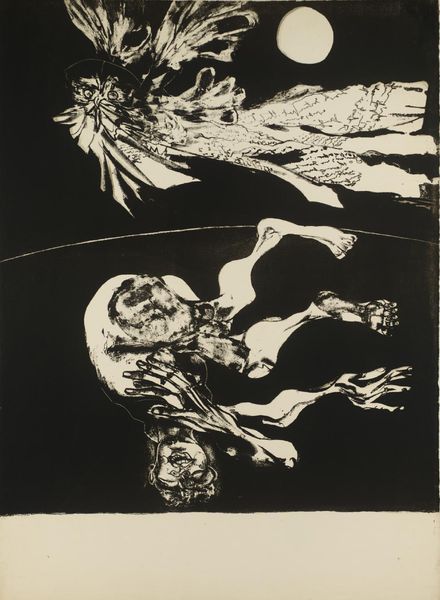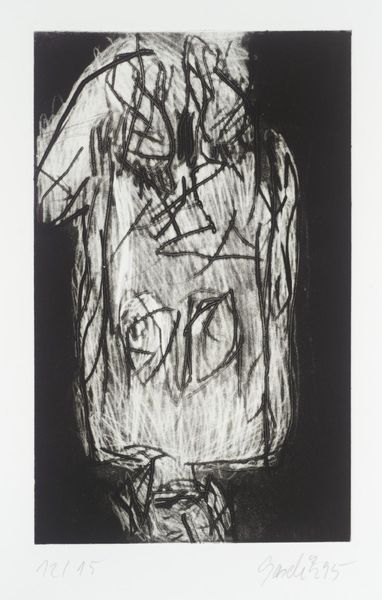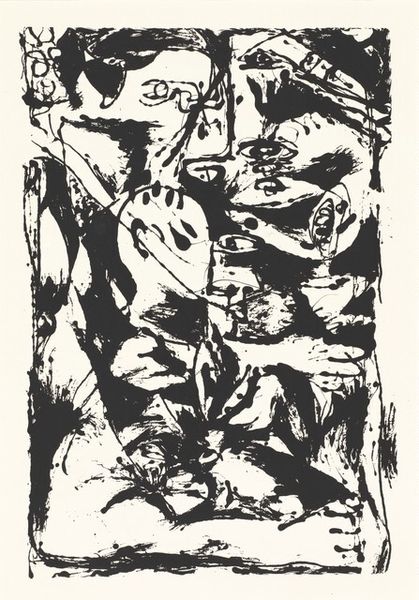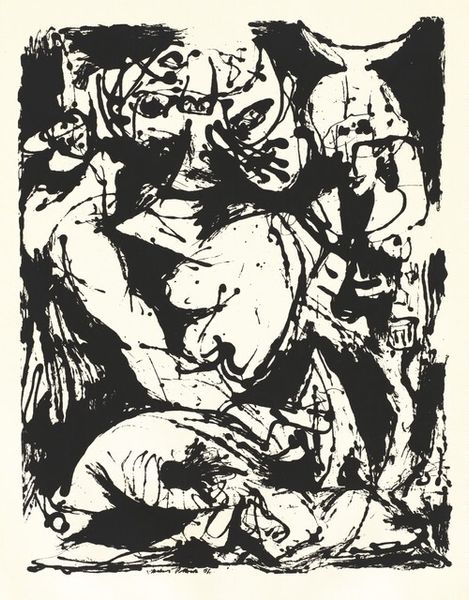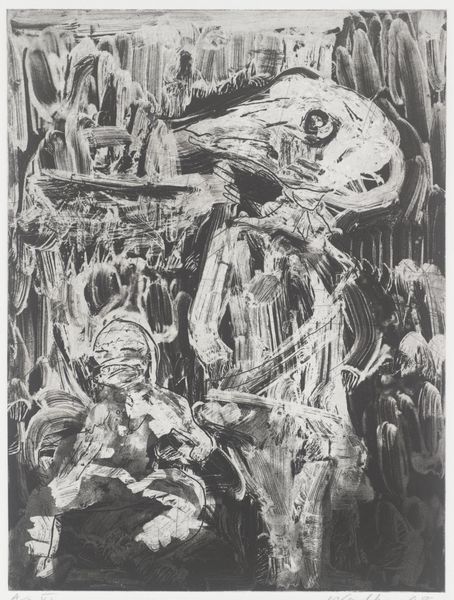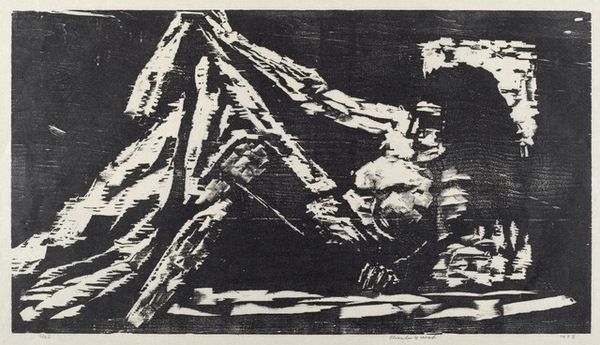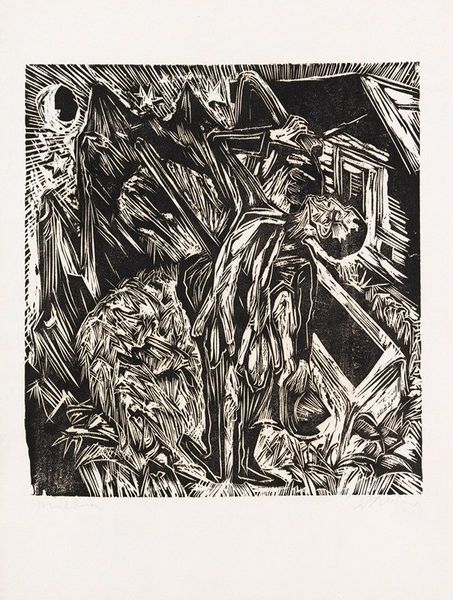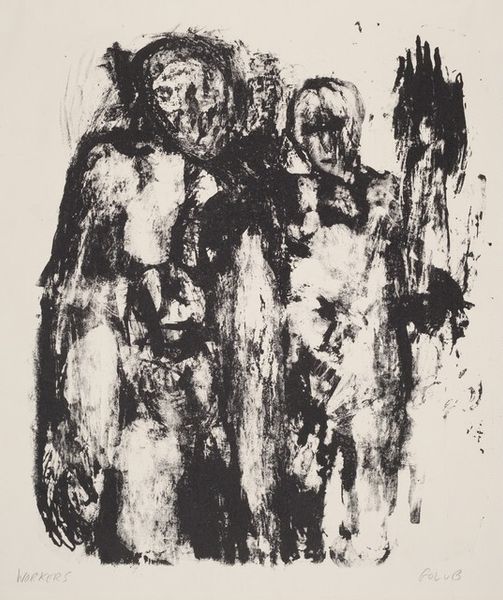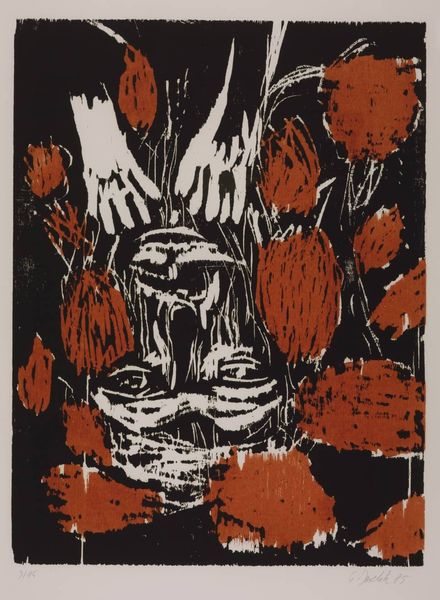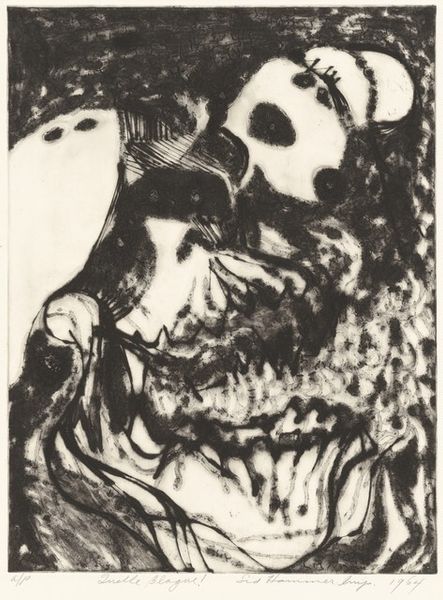
print, woodcut
#
narrative-art
# print
#
german-expressionism
#
figuration
#
expressionism
#
woodcut
Copyright: Public Domain: Artvee
Editor: This woodcut, titled "Christus am Kreuz," was created in 1919 by Lovis Corinth. The stark black and white contrast immediately evokes a sense of suffering and despair. What do you see in this piece? Curator: I see an attempt to grapple with trauma and faith in the aftermath of World War I. The figure of Christ, almost flayed in his rendering, becomes a potent symbol. Notice the broken lines, like splinters of wood, echoing the splintering of belief systems and societal structures. The black and white, beyond simple contrast, embody a harsh binary – life and death, good and evil, belief and disillusionment, starkly opposed. What do you make of the figures surrounding the cross? Editor: They seem consumed by grief and bewilderment, their forms almost dissolving into the darkness. It's as though their identities are being erased by the enormity of the event. Curator: Precisely. The use of heavy black, particularly in the figures around the cross, serves not just as negative space, but as an active element of obfuscation, devouring their individuality, signifying a collective trauma. Corinth might be implying the universal human condition: shared suffering, lack of clear understanding. Consider the halo: even divine light is rendered in jagged lines. Does this visual vocabulary signal a crisis in faith or a transformation of spiritual expression? Editor: I never thought about it that way, about how the line work extends beyond the simply visual to also imply meaning. It might mean faith itself is in crisis. It definitely makes me think about religious symbolism from a completely different perspective. Curator: Indeed. Understanding the visual vocabulary opens new avenues. By embedding cultural memory and anxiety, this piece offers not just a depiction of Christ's crucifixion but a reflection on the spiritual landscape of post-war Europe.
Comments
No comments
Be the first to comment and join the conversation on the ultimate creative platform.
